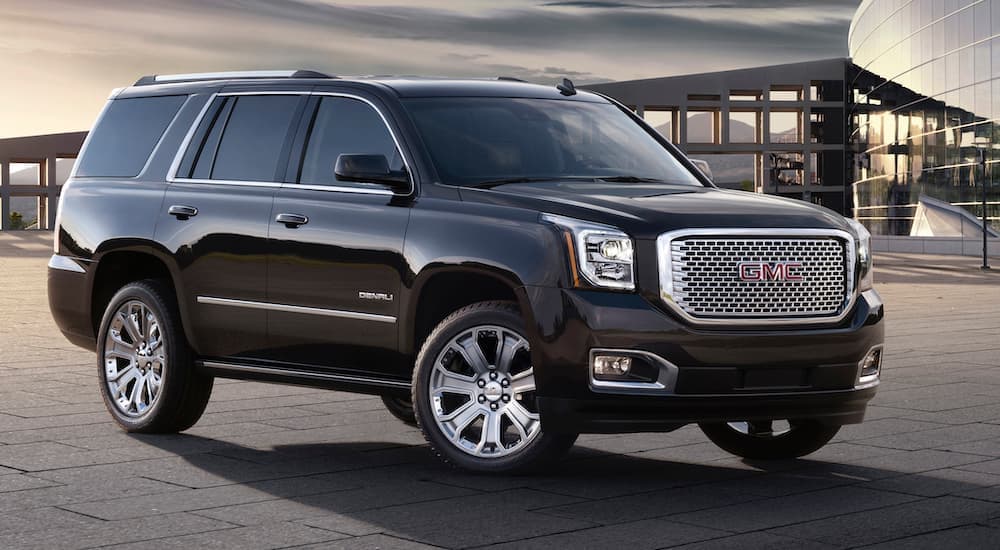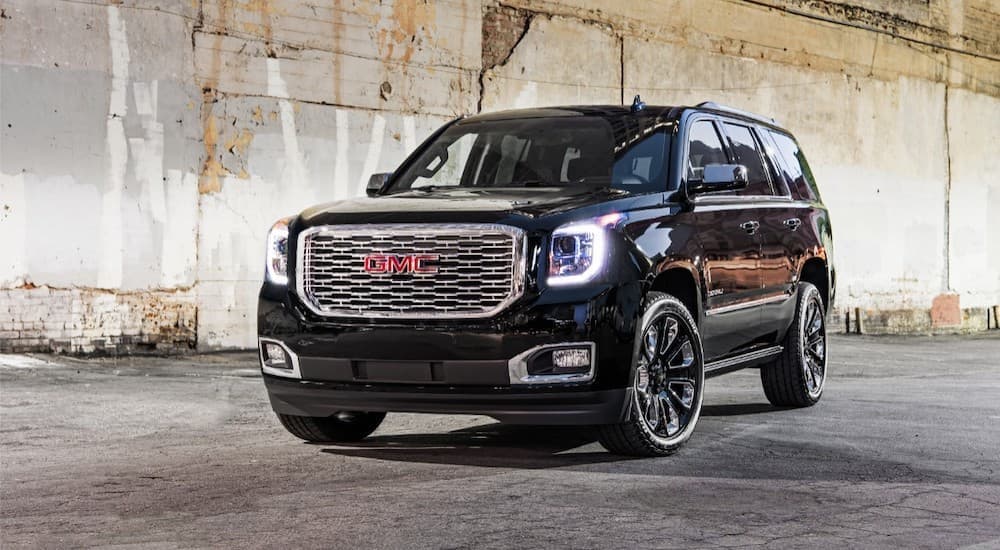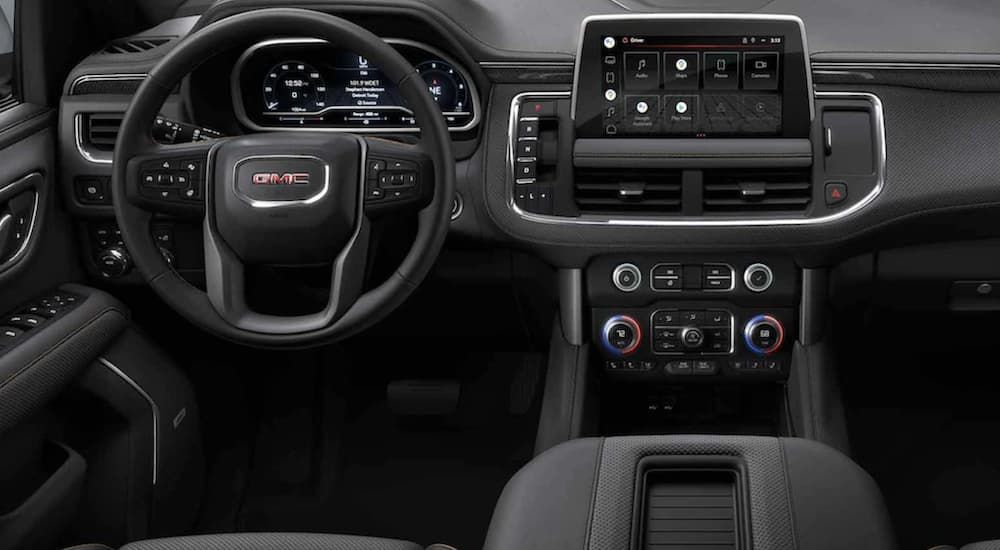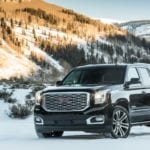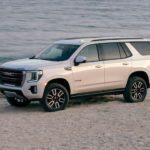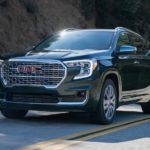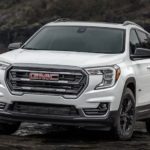SUVs are always getting refreshed, upgraded, and improved to stay relevant. When it comes to the GMC Yukon, many of the changes in recent years are refinements or enhancements that help keep the SUV one step ahead of the competition. With the 2022 GMC Yukon adding a number of new features to the line-up, it seems appropriate to take a look back at various other changes the model has received in recent times.
This list might give you an idea of where the Yukon is heading based on where it has come from. We’ll take a look at what sort of features have helped redefine the nameplate in recent years and how they have helped give the Yukon a personality all its own. So without further ado, here are the 7 biggest changes for the Yukon leading up to the 2022 model year.
2015: Next-Gen IntelliLink
The GMC Yukon was one of the vehicles to adapt to changing times as phones became more powerful. With cross-device networking becoming integrated into the social consciousness of consumer products, the Yukon decided to integrate such features as well. The 2015 next-gen IntelliLink was a big bridge from past infotainment systems to the newer-generation systems, including connectivity for up to 10 smart devices and MP3 players, as well as slots for SD cards, Bluetooth profiles, and 4G LTE Wi-Fi availability.
The IntelliLink also featured OnStar support and voice recognition. While many vehicles still didn’t even have basic smart device connectivity back then, the Yukon was pushing the boundaries and opening the door for more ways to interact with your vehicle using your phone or tablet. This was the start of something big for the Yukon moving forward, as the next-generation IntelliLink laid the groundwork for things to come.
2016: Apple CarPlay/Android Auto Integration
Following the update to the IntelliLink suite in 2015, for 2016, GMC decided to move forward with further upgrades to the infotainment suite. Part of those enhancements included the implementation of the very popular Apple CarPlay and Android Auto software. This enabled smartphone users to connect to their vehicle, stream media from their smart device, and utilize a lot of other useful apps and software. For instance, users could sync navigation or utilize hands-free text messaging and phone calls using voice activation.
This was a huge boon for making the IntelliLink system even more robust than ever before. In addition to all of this, the addition of wireless phone charging meant you could utilize your devices and connect to the Yukon, but then charge them without using any cords or wires. Apple CarPlay and Android Auto have been hugely popular features in almost every vehicle they’ve appeared in and were very welcome additions to the Yukon’s 2016 model year line-up.
2017: Teen Driver
While it doesn’t get as much praise or discussion as Apple CarPlay and Android Auto, Teen Driver mode has been popularized in a lot of GM vehicles abd is a hugely beneficial safety feature. That’s probably one of the reasons it isn’t talked about quite as much: it’s a safety feature. Most people are concerned about power, infotainment, and performance, but safety is just as important as the rest of those features, and GMC decided that it would be standardizing said safety feature for every trim of the Yukon, starting with the 2017 model.
Teen Driver mode is a great feature that allows parents to receive a report card of their teen driver’s on-road performance, so parents know how well new drivers are doing behind the wheel while driving alone or with friends. The mode also comes with built-in checklists that it runs through before teens are allowed to drive away. Making this a standard feature on the Yukon was a smart move and a great way to reduce the worry that parents have whenever their teenager gets behind the wheel of the SUV.
2018: 10-Speed Automatic Transmission
There weren’t a whole lot of new features to tout for the 2018 Yukon. Instead, GMC focused on refining what was already there. One neat update to the already feature-rich Yukon was the addition of a 10-speed automatic transmission for the Denali trim. This meant that anyone who opted for the top-of-the-line Yukon would automatically have the best transmission available installed from the get-go.
The 10-speed automatic transmission was matched up with the Denali’s 6.2-liter V8 engine. The benefit here was that it meant that there would be smoother shifts, less jerkiness, and an all-around more comfortable ride going from low to high-speed travel. While 2016 and 2017 had additional features tacked on to make those model years worthwhile, the 10-speed transmission was the biggest noteworthy addition to the 2018 model year. Still, better and smoother performance is nothing to scoff at.
2019: Graphite Editions
Instead of overhauling the powertrains, redoing the chassis, upending the exterior, or adding all different kinds of fancy bells and whistles, GMC went back to the basics for the 2019 model year. The biggest changes were actually in the form of special editions, known as the Graphite Edition and the Graphite Performance Edition. These specially made variations of the Yukon came with a number of noteworthy perks.
At the top end of the models were the carbon flash metallic pockets, black chrome grille mesh insert, and gloss beltline moldings and trimmings. These special editions all came in various shades of metallic colors and were outfitted with some nifty features, such as Bose active noise cancellation and the latest in heads-up driver display technology. The Performance Edition featured the return of the 6.2-liter V8 and 10-speed automatic transmission pairing, but this time with the Z85 air-ride suspension package for a smooth ride on all types of roads.
2021: Everything
You might have noticed that the 2020 model year didn’t make the cut. Why is that? Well, it’s because there were no major changes, updates, upgrades, or new editions made available for the 2020 model year. Don’t worry, though; that’s because GMC was working on an all-new 2021 model. The muscled-up 2021 Yukon featured all manner of changes as part of a complete model-year redesign. Everything about the 2021 Yukon screamed refinement, and it was all for the best.
It started with the base: a completely redesigned suspension and restyled exterior, giving the 2021 Yukon what the engineers called a “bold stance.” This translated into actual dimensional changes that improved the interior, increasing the max cargo capacity and overall passenger volume. In addition to more room on the inside and a sleeker and more refined look on the outside, the Yukon also received an all-new digital instrument cluster on the dash, a larger infotainment touchscreen, and more features, including built-in navigation support. Just about everything you could want from the Yukon to be better was made better. I don’t see how anyone could complain about that.
2022: Google Built-In Suite
When you add all of the new technology you could possibly want, improve the safety features with a lot of standard passive and active technologies, and refine the look so that the SUV is the most visually pleasing it’s ever been, what else can you do? Well, apparently, there is always room for improvement, or at least that’s how the GMC engineers see it. That’s why they took the liberty to focus on overhauling and upgrading the infotainment suite for the 2022 GMC Yukon, among other things.
While some SUV fanatics might be glued to the fact that the AT4 trim now has the 6.2-liter V8 available, the real meat and potatoes for the 2022 model year was tech upgrades. Not only was the 12.0-inch digital driver information display made standard across every trim, but some all-new features were added to the infotainment. The nucleus of said services is none other than the Google Built-In software suite, which networks all of the Yukon’s systems into user-accessible information displays. Said displays can be accessed from the touchscreen or by voice-activated commands.
The suite threads itself through an interconnected network that houses media, entertainment, navigation, and even vehicle health. All of these features are accessible either through the infotainment system or through a connected smart device. You can even connect your vehicle to your smart home if you have Google software installed there. It’s all one big network that ties every aspect of your life to a central software system, which is quite impressive.
